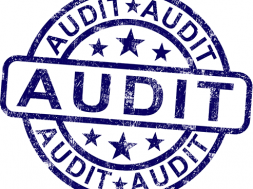
PPP Loans and HEERF Grants: A Guide to Accounting, Reporting and Composite Score Considerations
By Tom Wilson, Manager, McClintock & Associates
As the COVID-19 pandemic and a difficult 2020 continues, postsecondary institutions have to make significant decisions concerning the emergency aid that helped them through the spring and summer unlike any in memory.
The Coronavirus Aid, Relief, and Economic Security (CARES) Act, was enacted in response to the pandemic and designed to stimulate the U.S. economy. Portions of the act were aimed at providing certain entities with relief funds from various programs, and for postsecondary institutions, this aid was disbursed mainly through the Paycheck Protection Program (PPP) and the Higher Education Emergency Relief Fund (HEERF) grants.
As institutions receive and use these funds, a common question that arises is “What accounting and reporting guidance should I utilize to record these funds?”
Also, for institutions that participate in Title IV, how will management’s elections to account for and report the proceeds received from these programs impact the institution’s Composite Score.
Previously, McClintock & Associates issued an article in the June issue of Career Education Review discussing the basic accounting for PPP loans and HEERF grants, along with considerations for policies, procedures, and documentation. In this article, we want to provide information for recording and disclosing these funds in your audited financial statements. Robert Half was quoted as saying, “It’s easy to make good decisions when there are no bad options.”
From our research, it doesn’t appear any bad options exist for recording these funds. It’s just a matter of what is best for your institution. Follow this guide to get started.
Defining the Programs
Paycheck Protection Program: Included as part of the CARES Act, the Small Business Administration (SBA) implemented the Paycheck Protection Program (PPP) to provide small businesses with funds to continue to cover payroll costs, including benefits and certain other costs/expenses to help withstand the impact of the COVID-19 pandemic. Notably, the PPP provides a mechanism for entities to have the loan completely forgiven.
Higher Education Emergency Relief Fund: In addition, funds were provided to the Office of Postsecondary Education as the Higher Education Emergency Relief Fund (HEERF) to provide grants to postsecondary education institutions. HEERF includes two types of grants: institutional grants to allow institutions to cover a set of costs resulting from the disruption caused by the coronavirus and student grants for those whose educational experiences were disrupted.
For detailed information on the PPP and HEERF, please refer to the following:
- McClintock & Associates COVID-19 updates: https://www.mcclintockcpa.com/category/covid-19-updates/
- U.S. Department of Education COVID-19 Information and Resources: www.ed.gov/coronavirus
Accounting and reporting considerations
The answer to “What accounting and reporting guidance should I utilize to record these funds?” may be different for PPP loan proceeds versus HEERF proceeds. Based on facts and circumstances, it may also be different from one entity to another. In addition, it depends on which accounting guidance each entity elects to adopt. However, the accounting guidance related to debt and government grants is the most pertinent information.
Debt
As the legal form of the PPP proceeds is a loan, it will always be appropriate for entities to account for PPP proceeds it receives as debt under Accounting Standards Codification (ASC) 470, Debt. Also, if an entity does not expect to meet the PPP eligibility and loan forgiveness criteria, the entity must account for the proceeds as debt.
If accounted for as debt, an entity would recognize a liability for the full amount of the PPP loan proceeds received and accrue interest over the term of the loan.
If any amount of the PPP loan is ultimately forgiven, income from the extinguishment of the loan and any corresponding accrued interest would be recognized in the income statement as a gain on loan extinguishment. The recognition of this gain on loan extinguishment would not occur until the entity is legally released from the loan obligation.
For cash flow statement purposes, the receipt of the PPP loan proceeds would be presented as cash inflows from financing activities, with any amounts repaid being presented as cash outflows from financing activities. Any amounts forgiven would be disclosed as a non-cash activity.
Government grant
However, if an entity expects to meet the PPP’s eligibility and loan forgiveness criteria and believes the PPP loan is expected to be entirely forgiven, the entity may elect to account for the PPP proceeds as a government grant, as opposed to debt. Additionally, as the legal form of the HEERF is a government grant, an entity should always account for the HEERF proceeds as a government grant.
Concerning a not-for-profit entity (NFP), it should apply ASC 958-605, Not-for-Profit Entities, Revenue Recognition for HEERF proceeds. An NFP should also apply ASC 958-605, for PPP proceeds, if the NFP expects to meet the PPP’s eligibility and loan forgiveness criteria. Under ASC 958-605, an NFP is required to present government grants as a credit on its statement of activities on a gross basis, as “Grant Revenue,” or some other general heading, such as “Other Income.” If an NFP does not expect to meet the PPP eligibility and loan forgiveness criteria, the NFP must account for the proceeds as debt.
Meanwhile, there is no U.S. Generally Accepted Accounting Principles (GAAP) guidance related to for-profit business entities that receive government grants. As such, business entities will need to determine the appropriate accounting treatment by analogy to other guidance. We believe this analogy to other guidance will most likely be made to International Accounting Standards (IAS) 20, Accounting for Government Grants and Disclosure of Government Assistance. There is other guidance for which this analogy may be made (ASC 958-605, Not-for-Profit Entities, Revenue Recognition or ASC 450-30, Contingencies, Gain Contingencies), but we believe IAS 20 is most appropriate, because it includes an accounting framework for forgivable loans, and provides for-profit business entities two options to choose from, related to presentation on the income statement.
Under IAS 20, PPP proceeds and HEERF proceeds received would be accounted for as an income grant.
For PPP proceeds, a deferred income liability would be recognized upon receipt of the forgivable PPP proceeds, if an entity determined that there is “reasonable assurance” that it will meet the conditions for forgiveness of the full loan amount. The deferred income liability would be recognized in income on a systematic and rational basis over the periods in which the entity recognizes as expenses the costs the PPP is intended to defray.
For HEERF proceeds, the federal regulations indicate that an institution is required to minimize the amount of time between the drawdown of the proceeds and the use of the proceeds (disbursements made to students or to cover qualified expenditures).
Therefore, the proceeds would generally be recognized in income as the corresponding disbursements to students are made or when the qualified expenditures are incurred. However, if the qualified expenditure is related to a capitalized asset, the proceeds received can be recorded as either 1) a deferred income liability that would be recognized in income over the same basis as the corresponding capitalized asset is depreciated (Gross Method), or 2) as a reduction of the cost of the corresponding capitalized asset (Net Method).
IAS 20 provides that grants related to income can be presented as either 1) a credit in the income statement, either separately or under a general heading, such as “Other Income” (Gross Method), or 2) a reduction to the related expense (Net Method).
For cash flow statement purposes, relating to the classification of the proceeds, there is a diversity in practice under IAS 20. If the government grants are to be used for payroll, rent, and other operational costs, the proceeds may be classified as cash flows from operating activity. However, as a government grant is not related to the entity’s typical nature of operations, the proceeds may also be classified as cash flows from financing activities. It depends on the facts and circumstances.
An entity that accounts for PPP proceeds as a government grant must continue to reassess its ability to meet the forgiveness conditions, and it may have to reverse income if it can no longer support a conclusion that it expects to meet the conditions to have all of the loan forgiven.
Disclosures
Regardless of the accounting model an institution follows (debt or government grant), an entity should include clear and robust disclosures of the PPP loan and HEERF proceeds received in their financial statements. In addition to the disclosure of the method of accounting in its significant accounting policies, the entity should also consider the disclosure of 1) the amount received, 2) the amount included in income and/or deferred, 3) the basis for recognizing any remaining deferred amounts, 4) the terms and conditions of receipt and 5) unfulfilled conditions and any contingent liability for repayment. We believe transparent disclosures are important for the users of the financial statements as these programs are, in essence, one-time and not recurring.
Composite Score Considerations
How a postsecondary education institution is required to or elects to account for the PPP and/or HEERF proceeds will have an impact on the institution’s Composite Score. A few items to consider are as follows:
-
- Debt vs. Government Grant (PPP loans only): If an institution is required to (entity does not expect to meet the PPP eligibility and loan forgiveness criteria), or elects to account for the PPP as debt (as opposed to government grant), and has not been legally released from the loan obligation as of the institution’s year-end, the balance of the PPP loan and any accrued interest expense will remain as a liability as of the institution’s year-end. The institution will not recognize the gain on loan extinguishment in its income statement until the year in which it is legally released from the loan obligation.
However, on May 15, 2020, the U.S. Department of Education (ED) issued guidance allowing institutions to exclude the portion of the PPP loan the institution expects to be forgiven from total liabilities and increase the institution’s equity or net assets by that amount in calculating the institution’s Composite Score. The guidance indicated the expected amount of forgiveness must be identified in the institution’s audited financial statements and attested to by the institution’s auditor. The guidance did not differentiate between principal vs. accrued interest, pertaining to the amount to be considered. Since accrued interest amounts will be included in the forgiveness of the PPP loan, we believe the amount to be considered would include any accrued interest the institution expects to be forgiven, in addition to the principal amount the institution expects to be forgiven.
The guidance from ED did not mention the income statement impact of the gain on loan extinguishment related to the PPP loan forgiveness. As the Net Income Ratio component of the Composite Score utilizes both Income Before Taxes and Total Revenues, the timing of when this gain on loan extinguishment is recognized in the income statement will impact the composite score. Since ED has not specifically addressed this issue, we believe the inclusion of the gain on loan extinguishment for both Income Before Taxes and Total Revenues will not occur until the year in which the institution is legally released from the loan obligation and the gain is recognized in the income statement.
-
- Balance Sheet Presentation of Government Grants: A for-profit institution that elects to account for the HEERF proceeds as government grants, in accordance with IAS 20, will have the option of reporting proceeds received related to a qualified capitalized asset in the balance sheet, either on the Gross Method or the Net Method, as noted earlier.
If an institution elects to report the proceeds under the Net Method, as a reduction of the cost of the corresponding capitalized asset, the net book value of property, plant and equipment will be lower. However, if an institution elects to report the proceeds under the Gross Method, as a deferred income liability, the net book value of property, plant and equipment will be higher, and the deferred income liability will not be able to be used as an offset in the Primary Reserve Ratio.
As the Primary Reserve Ratio component of the Composite Score is calculated as Adjusted Equity divided by Total Expenses, and the Adjusted Equity amount is arrived at by reducing an institution’s Total Equity by the net book value of property, plant and equipment, how these HEERF proceeds are reported in the balance sheet will have an impact as to the Adjusted Equity used in calculating the Composite Score.
-
- Income Statement Presentation of Government Grants: An NFP that is required to apply ASC 958-605, or a for-profit institution that elects to adopt ASC 958-605, will be required to report the proceeds received in the income statement using the Gross Method, as noted earlier. A for-profit institution that elects to account for the PPP and HEERF proceeds as government grants, in accordance with IAS 20, will have the option of reporting these proceeds in the income statement, either using the Gross Method or the Net Method, as noted earlier.
If an institution elects to report the proceeds as a credit on the income statement, either separately or under a general heading, such as “Other Income,” this will result in an increase to Total Revenues. However, if an institution elects to report the proceeds as a reduction to the related expense, this will result in a decrease to Total Expenses.
Because the Primary Reserve Ratio component of the Composite Score is calculated as Adjusted Equity divided by Total Expenses, and the Net Income Ratio component of the Composite Score is calculated as Income Before Taxes divided by Total Revenues, how the PPP loan proceeds and HEERF proceeds are reported in the income statement, could impact the Composite Score.
Depending on the individual strength of each the Primary Reserve Ratio and Net Income Ratio components of the Composite Score calculation, how an institution elects to report the PPP loan proceeds and the HEERF proceeds in its balance sheet and income statement, in accordance with IAS 20, ASC 470, or ASC 958, could potentially impact the overall Composite Score calculation.
As you can see, the guidance isn’t a one-size-fits-all answer for every institution. Management should be proactively planning various scenarios and determine what accounting methodology makes sense for their particular circumstances. If you have any questions, comments and/or concerns, please do not hesitate to contact us at McClintock & Associates.
TOM WILSON is a Manager within our Audit department and specializes in conducting financial statement audits. Clients value Tom for his expertise with Title IV compliance, 90/10 calculation, and composite score planning. He provides business consulting services to various industries, but specializes in the for-profit education and service based entity fields.
A Certified Public Accountant and member of the American Institute of Certified Public Accountants, Tom’s background includes nine years with Beard Miller Company, LLP, who acquired Edwards Sauer & Owens, P.C. He is a graduate from Mercyhurst College where he earned his Bachelor of Arts Degree in Accounting.
In addition to his professional responsibilities, Tom is an active member of the Pittsburgh community. He has served as the treasurer of his son’s Cub Scouts organization, and has previously coached his son’s hockey, basketball and football teams. Tom currently enjoys watching his son play hockey, while volunteering his time, as needed, for activities associated with his son’s hockey teams.
Contact Information: Tom Wilson // Manager // McClintock & Associates // 412-257-8569 // twilson@mcclintockcpa.com // https://www.mcclintockcpa.com/team/thomas-r-wilson-cpa/









